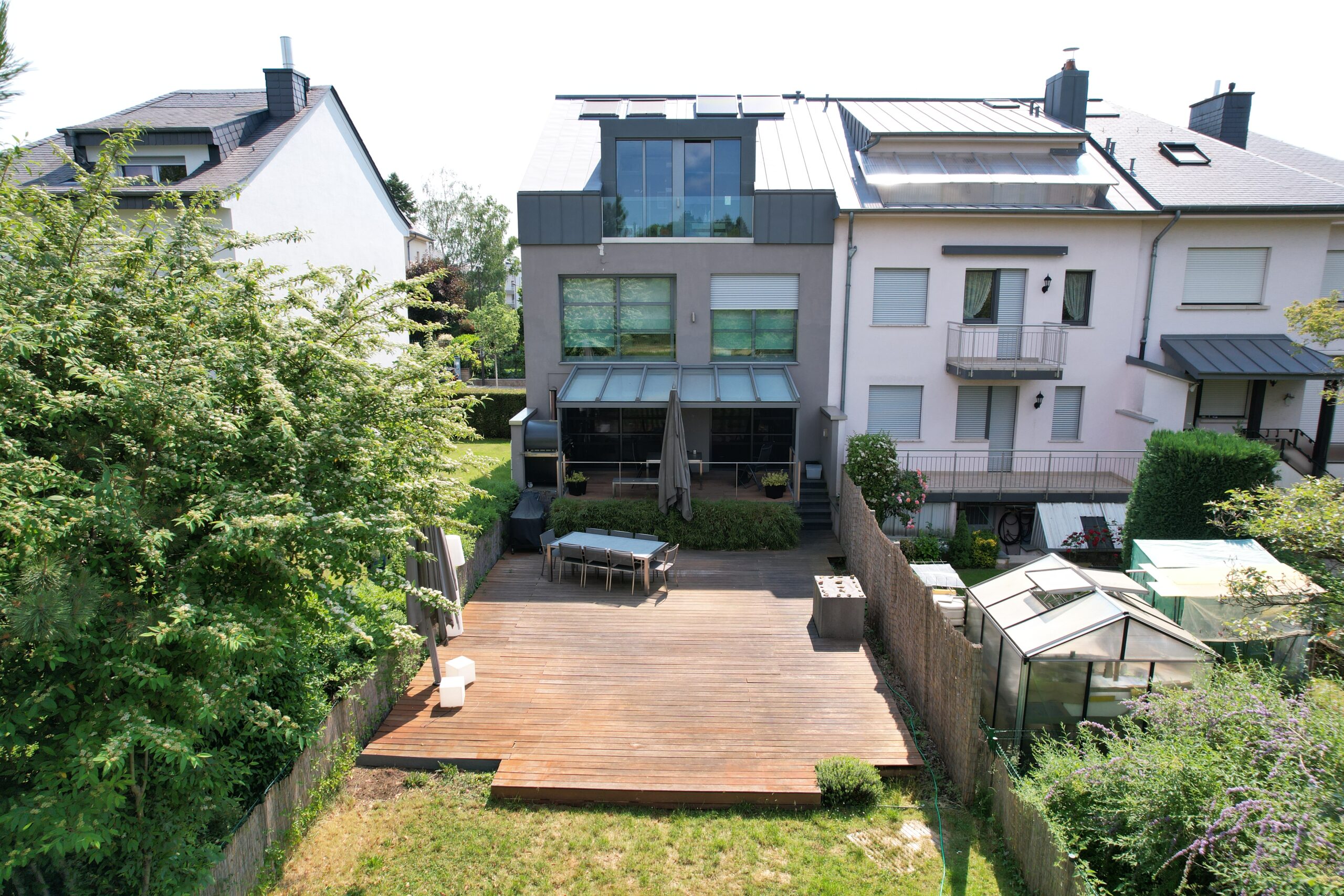Radical new measures
The issue of energy continues to grow in importance, against the backdrop of the war in Ukraine, which has led to a general rise in prices, and more generally in the context of ecological ambitions to reduce and transform the consumption necessary for the green transition. The real estate sector is no stranger to this, and the question of energy ratings for buildings is now at the heart of the debate.
The European Union has embarked on an energy transition aimed at reducing carbon emissions in the sector, and plans to renovate 35 million buildings by 2030 and decarbonize the entire building stock by 2050.
A crucial milestone was reached on March 14, when the European Parliament voted in plenary session to adopt an historic decision introducing minimum energy performance standards. This follows a French decision (the Climate and Resilience Act) requiring landlords not to rent out the most energy-hungry dwellings, known as “passoires thermiques” (heating slums), classified in the last two energy performance categories. This means a ban on renting out such properties, and even a freeze on rents.
The European Union is now going one step further, and wants to force homeowners to renovate their energy-inefficient homes before selling them by 2030 (based on the same idea of the last two most energy-intensive classes). This measure would apply to individual and collective housing as well as non-residential and public buildings.
These provisions will undoubtedly influence the market, since they will have a growing impact on the value of the least energy-efficient properties, but will also drive future financing policies, with banks increasingly including these elements in loan negotiations and perhaps even as a condition of approval.
Does this classification already exist in Luxembourg?
The energy performance certificate (CPE) in Luxembourg
In Luxembourg, the energy performance certificate, also known as the “passeport énergétique” and valid for 10 years, classifies residential buildings according to their energy performance. It provides information on the building’s calculated energy requirements and CO2 emissions, with classes ranging from A+ to I.
The rating depends on the primary energy requirement (electricity consumption for all equipment), the heating requirement and also takes account of CO2 emissions.
The certificate is compulsory for the sale, letting, conversion, extension or construction of a residential building, and is therefore an essential document for any operation, except in the case of demolitions, where the developer must issue one for the new homes built (an updated energy performance calculation must be provided to the mayor within two months of final acceptance of the building or the start of its use). It should also be noted that donations/assignments do not require a certificate.
With regard to conversion, it is considered that work that has an impact on the energy performance of the building, such as substantial modifications to the thermal envelope or technical installations, may also make it compulsory to draw up a certificate.
To obtain an energy performance certificate, it is necessary to call on the services of a construction expert such as an architect, an engineering consultancy or an expert approved by the Ministry of Energy and Town and Country Planning.
The costs depend on the study, and it is regrettable that there is no government subsidy or tax incentive for the preparation of the study, which could help to improve the overall system and the quality of the analyses.
The documents required to draw up the certificate depend on the type of construction (new build or existing building) and generally include plans, construction details and thermal energy consumption records for previous years.
But is this document enough?
A very limited reporting obligation
A property transaction in Luxembourg involves only one document, the performance certificate we have just described.
With the exception of condominiums, where the documents of the General Meeting of condominium owners and maintenance and repair costs are communicated to future purchasers, no other document is provided for under Luxembourg law. Although heating bills, for example, may be requested in practice, in theory this is not compulsory.
It’s a pity, though, and even insufficient, given the complexity of a building, whether it’s the intrinsic quality of the property, its walls, its framework, its roof or even its pipework (which are of course taken into account, particularly for the question of the property’s insulation in terms of energy performance, but not studied in themselves), or the quality of the electrical systems. The more risky elements, such as the presence of asbestos or thermite, or simply the risks associated with natural disasters (flooding), deserve particular attention.
This is all the more true given that, when compared with other countries such as Belgium and France, the reporting requirements are much more extensive and comprehensive.
There are 9 requirements in Belgium for the transfer of a property. The title deed, obtained when the property was acquired or inherited, and the lease documents in the case of a rental property, such as the lease agreement and the inventory of fixtures, must be collected. The EPB certificate, which assesses the energy performance of the property, must also be provided and is valid for 10 years, but must be updated if work has been carried out to improve the energy rating. A soil certificate may be required if the seller is aware of the presence of pollution on the site, while an electrical inspection certificate is compulsory to prove the compliance of the electrical installation. Certificates are required for town planning information. A file of subsequent work must be compiled, listing all work carried out since 1 May 2001, providing a complete inventory of the property you wish to buy.
This not only gives you an idea of the energy performance, thanks to a certificate similar to the one used in Luxembourg, but also provides general and detailed information about the property, such as a history and repair log. This gives you a clearer picture, and a detailed projection of the work that can be carried out. There is no doubt that such information can be useful when presenting your project to the bank.
In France, in addition to the energy performance diagnosis (DPE), which is similar to the performance certificate, a report on the risk of exposure to lead, asbestos, termites, electrical, gas and sewage installations must be carried out when selling a property. There is also an analysis of natural hazards and, more surprisingly, noise levels in the surrounding area.
This may be too much information, too many procedures and too many documents to provide, but it makes the picture much clearer and more complete for the potential buyer.
On the question of housing classified in the last two categories, which we mentioned in the introduction, these are subject to an audit in France, which should make it possible to propose different ways of carrying out work to the future buyer. This will be necessary when the European directive comes into force, because the cost of the work will be discounted from the sale price of these sieves (in fact, the ban on sale will probably be materialised by the obligation to apply the discount for the work needed to improve performance to the price of the property for sale).
Finally, while there is some concern about the proliferation of documents linked to these obligations, since 2023 these have been centralised for new properties (or those that have undergone work changing their energy class) in a housing information booklet, which will include these energy certificates, as well as general information on the materials in the property and on the heating/cooling system, which seems essential in a context of optimising materials and seeking increasingly efficient heating solutions that are not expensive in terms of consumables and maintenance.
A document that brings together the essential information (perhaps without going as far as the slightly rigid French provisions), indicating not only an energy status but also a general status of the property, including its materials and its electrical and heating systems, and possibly the work that could be carried out to improve the energy class, would be beneficial in Luxembourg property transactions. It would provide a clearer picture and enable banks to assess transactions much more accurately. There is no point in having a certificate just to comply with regulations (at present, many compromises are made without any consideration whatsoever). Awareness of the climate challenges and the transformation of the property stock require clarity and the most efficient and detailed information possible for future buyers.
Building mapping
Compromises of sale are accompanied by performance certificates, and it would be conceivable for notaries to systematically communicate this information to statistical bodies (LISER in particular). Better still, a more comprehensive document indicating the general state of repair (including materials, heating and electricity systems and technologies) could be used to produce very regularly updated statistics mapping Luxembourg properties in this area. This would be particularly effective in analysing the energy transition in the property sector, with the European Union’s 2030 target fast approaching.
An article by Van Maurits Immobilière



